Text
A New Kettle and Tabidansu Koicha
In the last weeks, a lot of our usual members are quite busy and could not attend okeiko. While that gives each of us more time to practice slowly, it also creates an inconvenient lack of guests sometimes. But I have to admit I enjoy some more detailed talks with my teachers.

I practiced koicha temae with a tabidansu. It is nice to get a bit more practice with koicha. There is a lot about it that still doesn’t flow quite naturally for me. Here is what I learned:
The fukusa is only snapped before folding it for the first time after taking it off the waist. I knew we only do it sometimes and kind of knew when. But it’s nice to know why as well.
I need to hold the chaire and chawan a bit lower when I clean them. My teacher told me in this way the angle between my hand and arm is more beautiful.
I tend to forget the nakabuta procedure (closing of the lit during the tea preparation) a lot. I haven’t practiced koicha with winter kettle enough probably.
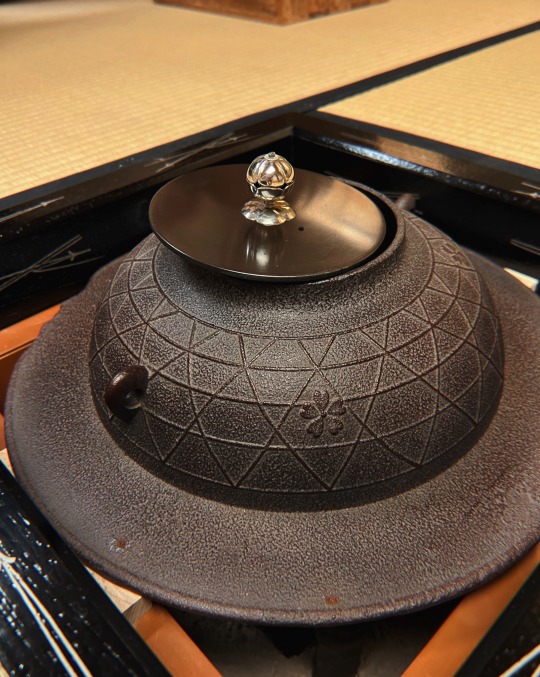
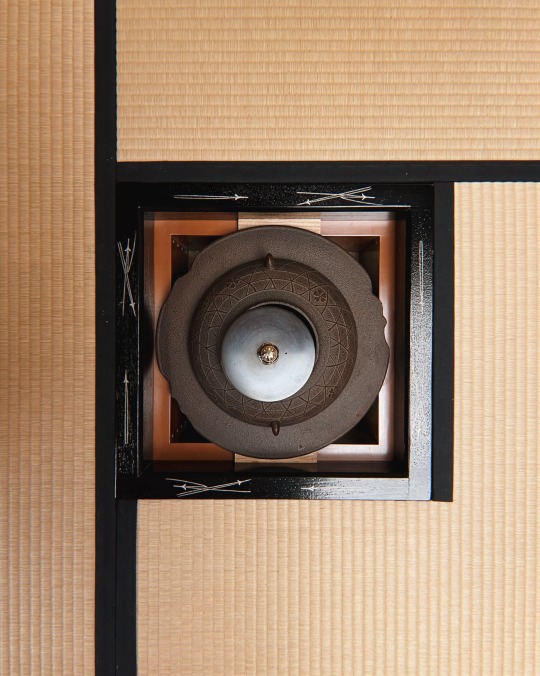
We have a new kettle at our tea ceremony class. It is a sukigi kama (透き木釜) and just as beautiful as special as it is. Also, it reminds me of a ufo or planetary rings.
Besides that, I could watch a sumi temae with the new sukiki kama as well as a satsubako temae both for the first time.
2 notes
·
View notes
Text
Challenges and Hina Matsuri
When you feel too confident, you will come across something that challenges you.

At least that’s what I learned at the last tea ceremony class. I got used to usucha temae in the last month. And even practicing koicha last time felt quite ok-ish for how long I haven’t done it. But this time I got to practice a koicha nagao temae with an oimatsu chaire.
Sounds as specific as it was. A nagao temae is a koicha temae using a shifuku (tea caddy pouch) with a long cord. An oimatsu chaire in addition is a chaire that is mad of old pine tree and has a half split lit. Here is what I learned:
I should learn the order of yohosabaki (some kind of checking the fukusa before a koicha temae). You need it for every koicha temae and I should get the basics done, if I feel so confident lol.
Handling the nagao shifuku is really difficult. I did it the second or third time now. I know the overall order, but none of the movements feel right and I make a lot of mistakes. I wish I could practice it more.
Half split lits are hard to handle. It gets easier each time. But I always have at least one blunder.
When you open the oimatsu chaire you put your left thumb on the middle of the left half of the lit. Then you open the lit and rest the right have on top of your thumb.
Kneading koicha is a long and slow process. The emphasis is on slow!
Besides all of that, hina matsuri is around the corner. One this occasion we had some hina matsuri utensils like futaoki in shape of the laterns, a chawan with the emperor’s couple and a wall scroll with a drawing of the couple.
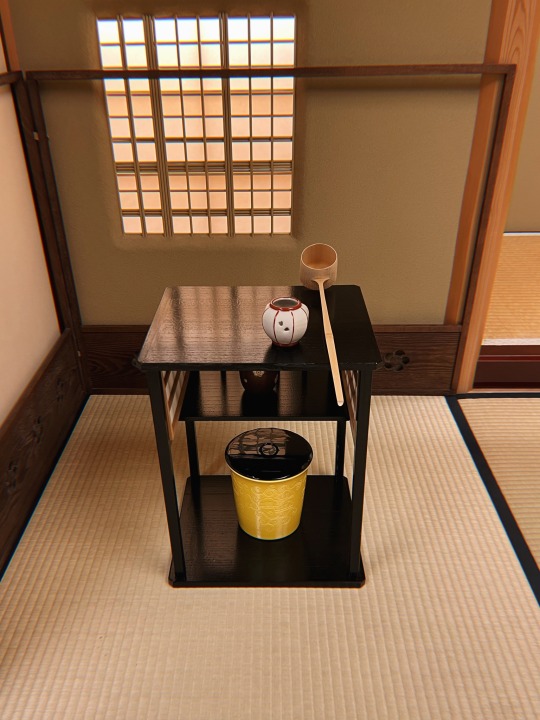
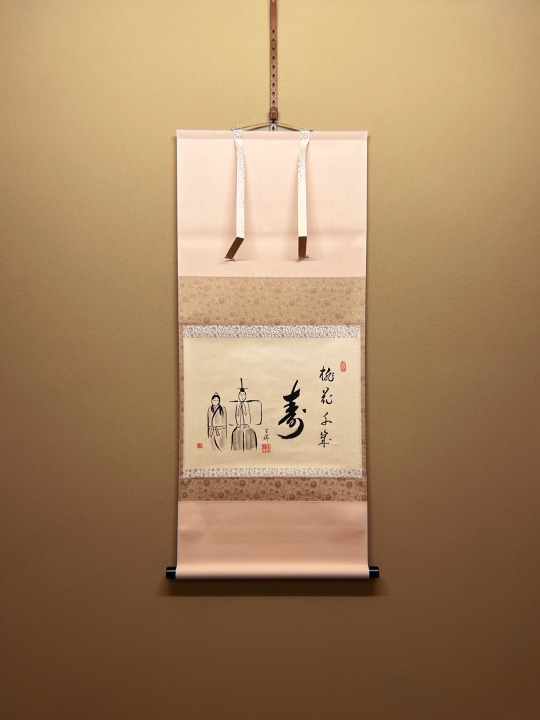
The other day I also went to see some hina matsuri decorations at a nearby traditional Japanese house. I thought it’s a good occasion to share a picture of that (and my favorite little decoration detail) as well 🎎
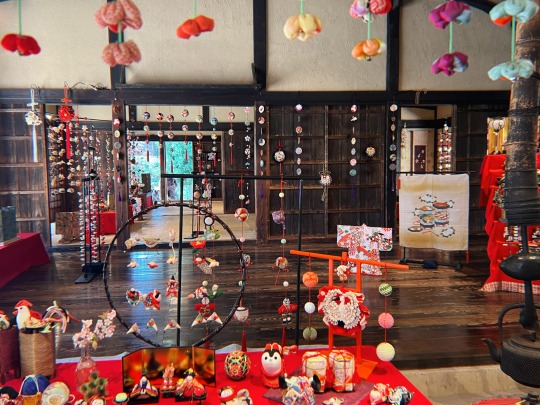
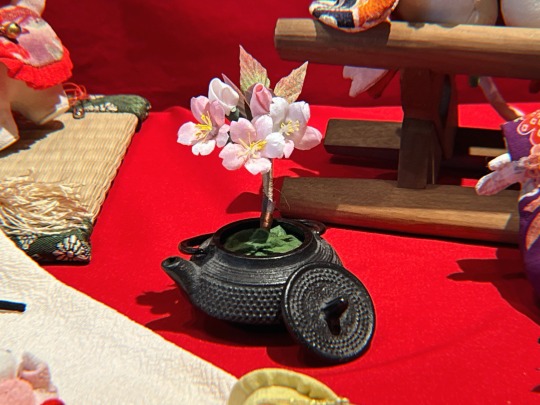
#japan#tea#japanese culture#tea ceremony#matcha#茶道#the way of tea#omotesenke#抹茶#茶#お稽古#okeiko#表千家#tealover#hina matsuri#hinamatsuri
1 note
·
View note
Text
A Souvenir from my Precious Kyoto Trip Last November
On my last day, I stumbled across a woodblock print shop. I looked around and wondered—what if I find something tea ceremony related?! One staple caught my attention. I skipped through so many beautiful prints and my intuition told me to keep looking. At the very bottom of the staple I found it. A woodblock print with three women practicing tea ceremony. Like it was waiting to be purchased by me.
Yesterday, I finally found the perfect frame for it 😌
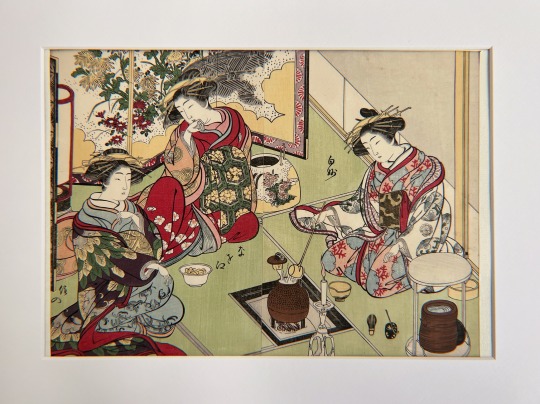

#japan#tea#japanese culture#tea ceremony#matcha#茶道#the way of tea#抹茶#茶#茶の湯#京都#Kyoto#woodblock print#japanese woodblock#木版画#版画#teablr
4 notes
·
View notes
Text
Two New Chawan
A few days ago, I bought these two chawan at Book Off Super Bazaar—a huge second hand shop. The oribe style one was only 550¥ and the grey one 880¥. Unfortunately I don’t know exactly what style the grey one is. If you know anything, feel free to let me know.
I love browsing through second hand ceramic sections. You never know what you might find. And I was lucky to come across these beauties. I wonder what stories they could tell 😌
Oribe Style Chawan

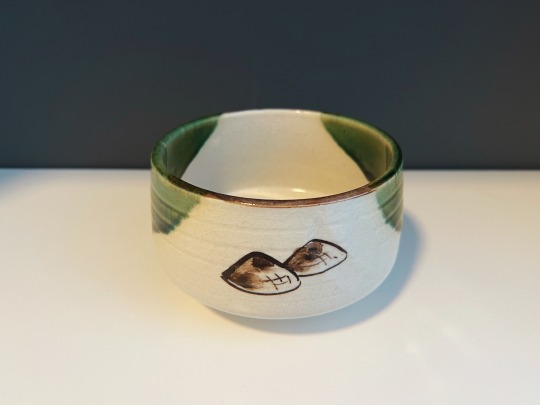


Grey Chawan
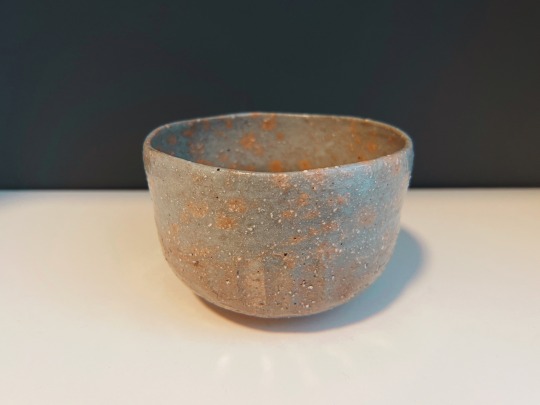


#japan#tea#japanese culture#tea ceremony#matcha#茶道#tea bowl#chawan#茶碗#ceramics#matcha bowl#抹茶#茶#teablr
6 notes
·
View notes
Text
Black Tea Ceremony in Kuroan by dokodemocha
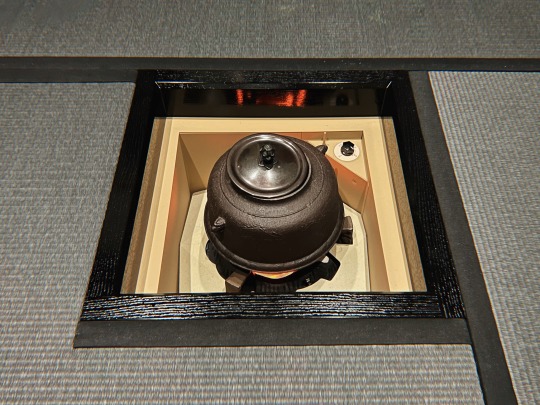
In January, tea enthusiast and Omotesenke tea master Alba (@dokodemocha on Instagram) opened her very new and own tea room. I’ve been following her for a few years now and her insights always inspire me. Naturally, I was thrilled when she announced the opening of her tea room. So I booked a seat for her very first tea ceremony.
Her tea room is called 黒庵 Kuroan—meaning black tea room. And the name says it all: The whole room had a black theme going on mixed with some earthy colors. All utensils, sweets and even the flowers had been black.



It was not a traditional tea ceremony. For the inauguration of her tea room Alba thought of a unique concept. The whole experience included meditation, koicha, usucha, incense and and over all refreshing atmosphere. But I’m not going into the details, because no words would do it justice.
I guess the biggest insight for me was to see where one’s tea ceremony journey might take you 😌
3 notes
·
View notes
Text
Koich Practice after well tooooo long
After several month, I got to practice koicha again. As I mentioned we practiced the same temae for the chakai in december for month. So there was no time left for koicha. I was super excited to be honest. Somehow koicha is more fun to me.

Notes on what I learned
I have to handle my fukusa more slowly and carefully. No rushing needed.
When taking out the chasen of the chawan, you turn your hand so your thumb is on top.
I really have to look up the name of the pattern of my dashibukusa. I have just no clue—which is a shame to be honest.
The overall order of koicha is not that different to usucha, but it’s about the details. So my overall flow with koicha is still not as good as with usucha. But that’s probably natural, since I haven’t practiced koicha for a while and overall a lot less than usucha.
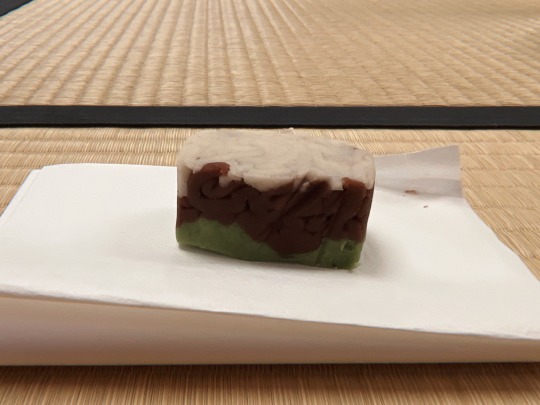
Today’s omogashi was called shitamoe which means below sprouts and refers to the greens coming out of the spoil below the snow.
#japan#tea#japanese culture#tea ceremony#matcha#omotesenke#the way of tea#茶道#抹茶#茶#お稽古#tea school#tealovers
3 notes
·
View notes
Text
Today is 抹茶の日 Matcha Day in Japan
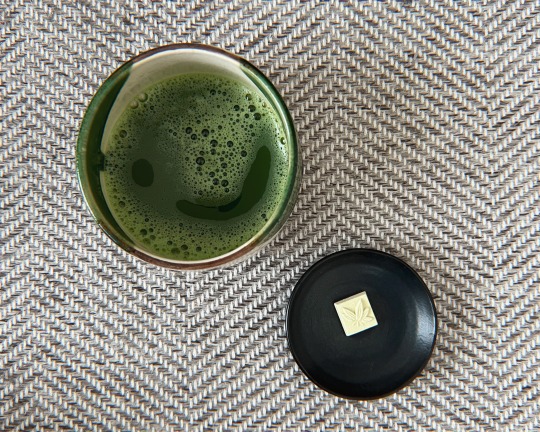
I took this as an occasion to finally start something my thoughts have swirling around for a while: more account dedicated for my love for tea and everything tea ceremony.
So if you use Instagram or Bluesky feel free to follow aprikotea there as well.
To celebrate, here follow some facts about Matcha Day.
What is Matcha Day?
The day was founded in 1992 by Nishio city in Aichi prefecture. It has no traditional value in the tea ceremony but rather a commercial background. Some matcha companies use it as occasion to promote new products.
Why on February 6th?
During the warmer month the water for tea ceremony is boiled in a portable stove called 風炉 (furo). If you take the reading apart "fu" can also mean two and "ro" can mean six. Since dates are usually written in MM/DD format in Japan, February 6th was decided to be Matcha day.
How do I celebrate the day?
The day has no traditional value and I have no celebration rituals or the like. Today I had some Matcha granola for breakfast and did a tea ceremony practiced later during the day. Maybe just take it as (just another) occasion to drink a matcha 🍵
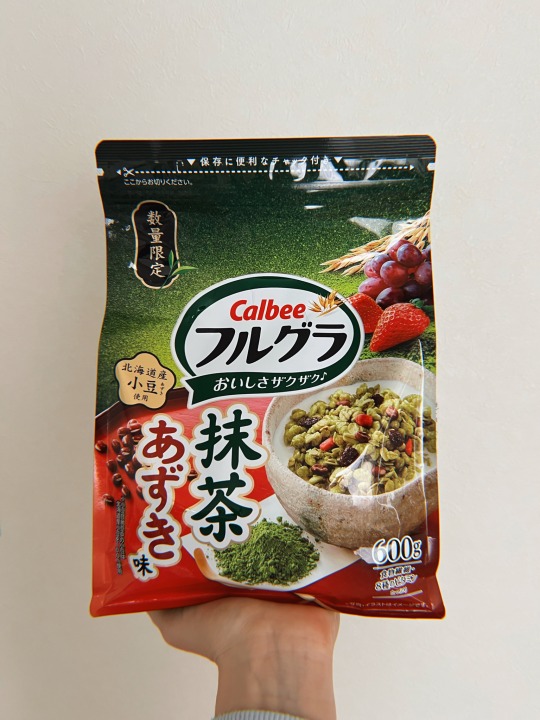

Fun Fact: You may have heard about Matcha Day on May 2nd - especially in the USA. I’m am not sure about its origin or the meaning of the date as I read a lot of different stories about it. But this version did not originate in Japan since May 2nd is 緑茶の日Green Tea Day in Japan. Maybe someone just mistranslated or misunderstood it.
7 notes
·
View notes
Text
Jouou-Dana and Will I ever understand Kagetsu

Just a fun fact as starter (because I keep forgetting it): The tabacoo tray always marks the seat of the shokyaku (first guest). And by the way, we don’t smoke during tea ceremony. It’s something that was probably done in past. But nowadays it is just a custom to mark the seat.
There is so much I could weite about the tea practice in January. After joining usucha and koicha as a guest, I got to join kagetsu. It is kind of a game where you draw lots to decide who will prepare the matcha and who will drink it. We do this really rearly because the rules are a bit hard to understand and only a few people know them fully.
Please don’t ask me for details. Even though I did it four times already now, I don’t understand them. To me it feels like they are always a bit different. But that’s probably because I always don’t remember the last time. Anyhow, it is really fun and creates an easygoing atmosphere.

Even though I prepared a matcha during kagetsu, I also got to practice a separate temae. We used a self called jouou-dana as we usually do during January. It has some tweaks to it.
The mizusashi is inside behind the right door. You pull it out only 1/3. And you have to do this right at the beginning. Otherwise other utensils will get in the way and you won’t be able to get it out.
You always open the doors with two hands and start with the hand that is further away.
Even though this self is used with the winter kettle the natsume and chasen are placed in the center of the self.
The lit of the mizusashi is place outside on the left side.
At the end, the hishaku and futaoki are decorated inside the self behind the left door.
When you fill up the mizusashi with water, you pull it out completely. At this time, the lit is place above it and inside the groove of the self.
I joined my current sensei last year January. Starting to use the same utensils like last year again really makes me feel how time flies. I am really thankful and learned so much in this year.
Also btw, for koicha I could join the special tea room from last time again. How blessed can one be?! 😌

#japan#tea#japanese culture#tea ceremony#matcha#omotesenke#the way of tea#茶道#抹茶#茶#お稽古#teaschool#tea room
4 notes
·
View notes
Text
Hatsugama: The First Tea Ceremony in the New Year
The first class in the new year is usually not a normal class but rather a special tea ceremony called hastugama - meaning the first kettle.
Before we started, everyone got some kind of citrus tea for a good digestion. Than the highest Monk visited us and said a fee words to everyone. This is probably a bit special because I’m going to tea ceremony lesson at a temple.
This year, we all joined one big tea room which was really nice, since we are usually split into two rooms. Before we started we rinsed our hands and mouth at the tsukubai, a water basin, in the garden. Because the water was quite cold, there was also a wooden bucket with hot/warm water. This water was only used to rinse your mouth though. After we entered the tea room, one student prepared the coals and afterwards served koicha. Like last year, we used a set of two special chawan.
They are kind of red/orange on the outside and inside one of them is silver and the other one gold.
The temae will bring both chawan stacked over one another into the tea room. Therefore the silver one is slightly bigger and especially wider than the golden one.
The golden one is used first and can serve up to 4 people. The silver one can serve up to 5 people.
We have been around 15 people. So even though these chawan can serve 9 people in total, the hanto still had to bring two additional chawan from the mizuya.
We also had a look at the lits of the utensil boxes. In this way you can learn even more about the utensils and their origin. One of the additonal tea bowls has a close connection to the shichifukujin (The Seven Gods of Fortune). They are symbol for the new year, so it is best to use this chawan around this time.
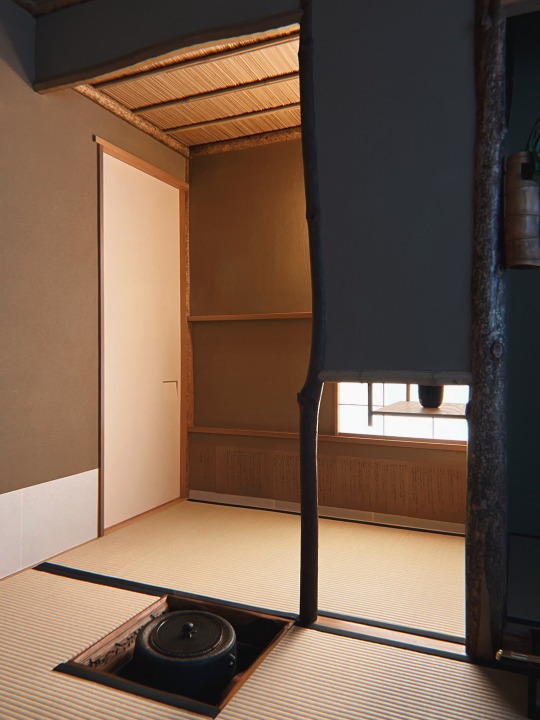

After the koicha ceremony was done, we split into groups of 6 people and joined an usucha ceremony as well. For this one we went into a much smaller and very special tea room. This one is heavily inspired by Sen no Rikyu’s tea room, yet the layout is a bit different. The atmosphere was special and it made me feel close with everyone. It was my first time to enter this tea room.
Usually you also have a kaiseki meal at a hatsugama ceremony. But at my classes we skip the meal and everyone gets a bento to take home.
Oh and I enjoyed my time so much that I just took no pictures besides the two you can see above.
#japan#tea#japanese culture#tea ceremony#matcha#omotesenke#the way of tea#茶道#抹茶#茶#hatsugama#初釜#Sen no Rikyu
1 note
·
View note
Text
The Tea Party!!!
I had to get up at 4am because I was meeting my teacher at 6:30am. Everyone was wearing a kimono on that day, so I had bought a 2nd-hand kimono as well. But since I am in no way able to put it on myself, I met my teacher early in the morning, so she and another fellow student could dress me.


The tea party took place at a temple in Kita-Kamakura - the same one where I attended my first tea party as a guest in summer. Around 8am everyone else was arriving and we were allowed to join a ceremony with the monks.
9:00 AM - The First Session Starts

Each session one of us would perform the temae we were practicing the last weeks. And the other ones would help in the mizuya - preparing or cleaning stuff - or as hanto - bringing the sweets plates and tea bowls in and out of the tea room. My teacher would sit close to the exit of the tea room and talk to the guests. Each session took 45 minutes and consisted of 12 guests. We had 9 sessions, so we served 108 guests in total.
The guests were kind of random people. The temple announced on their website that they’ll hold a tea ceremony and people could apply for a seat. Some of them were acquaintances of our teachers, like other teachers and their students. But for most of us students they were unknown people.
Each and everyone of us was super nervous. Therefore, the first session was the toughest one. But everyone was putting in their hearts and we improved tiny details with each session.
Since it would take a lot of time to prepare 12 bowl of matcha by the temae in side the tea room, they would only prepare the matcha for the first and second guest, also known as shokyaku and jikyaku. The matcha for the third guest and everyone else would be prepared in the mizuya.
As hanto, which is basically an assistant, each session started quite busy, because we would bring in the sweets plates and had to pick them up a few moments later. Afterwards, we had kind of a waiting period until it was time to prepare additional matcha bowls. And then it would get quite busy again, since we had to bring the bowls in the tea room and of course pick them up again.
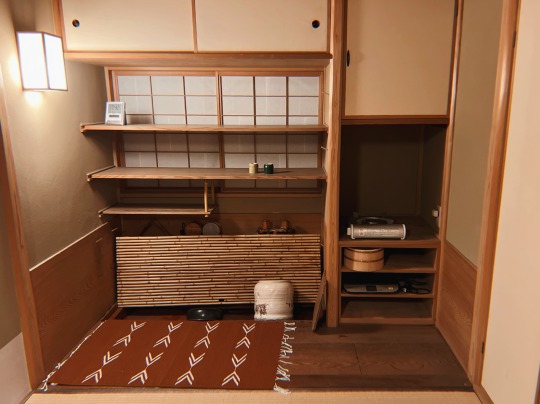
12:00 PM - My Turn
Just two sessions before it was my turn to be temae, I started to get super nervous. At some point it sat down and went through all the steps in my head and kind of mimicked the movements with my hands. One of the older students told me, that there's no need to do that and it'll all go well. And it kind of did. At the beginning I almost dropped the hishaku. But besides that, I made no bigger mistake. At one point, I realised I took the tea bowl with the wrong hand. But than I remembered what one of my teacher told me: If you notice you make a mistake, just act like you didn't and it's just "how we do things". And well, nobody probably even noticed it.
My teacher also talked with the guests about me not being Japanese but still having a big passion for tea ceremony. She even praised my teacher in Germany and myself as well. This was a little awkward while being in the room, but I might just not be good with compliments in general.
Afterwards, I got a little break which we all took in turns. We had ordered bentos with some traditional Japanese food for that day. I was lucky to have my temae session before eating. I guess otherwise I would have not been able to get any food into my body.
4:00 PM - Finally Done
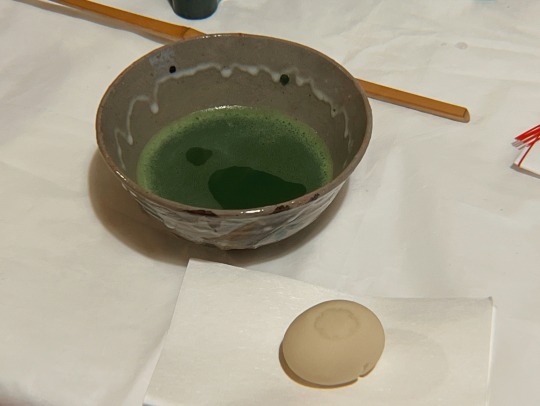
Around 4pm we finished the last session and everyone got really happy and relaxed. We talked about everything that happened, took pictures, drank matcha and also started to tidy everything up. My teachers and a lot of the guest brought some gifts for us, which we divided into little bags to take them home. And by 6pm most of us left the temple and started our way back home.
Overall the whole day was really exciting, but it was also exhausting. I hold so many precious memories, learned so many new things and got a little bit closer with everyone.
5 notes
·
View notes
Text

Tea Ceremony Related Places in Kyoto - My Recommendations
In autumn, I decided I only want to travel, if I have any particular reason to go somewhere. Traveling for the sake of traveling and checking of towns and places from some kind of to do list feels odd to me. But that’s a whole topic for itself.
That being said, I thought about what I am really enjoying about living in Japan and where I really want to go. So, I went to Kyoto and focused my whole planning around tea ceremony. A few weeks prior, a friend already gave me some tea ceremony related tips for Kyoto. On top of that, I also asked my tea ceremony teacher for recommendations and did a little research myself.
In the end, I went to Kyoto for 5 days, visited lots of museums, antique shops, temples and the like. These days were so inspiring and I would love to talk about each day in detail. But that would take up too much energy for me to write and anyone to read (like… I journaled about 4 pages each day on paper). Instead I will sum up my recommendations and talk a little bit about accessibility in English.
Places accessible in English
While there is not a lot of English coverage when it comes to tea ceremony, there were a few museums that had English information.
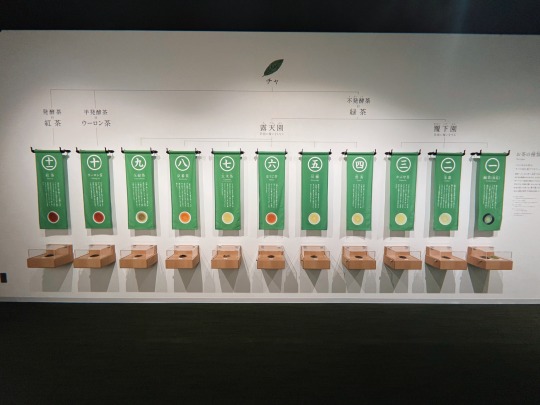

Chazuna in Uji: This a tea center which includes a museum and offers workshops. On top of that, they offer a lot of information about Uji and how you can spend your time there. The whole center is really modern and feels very interactive. They have a huge interactive display in the main hall to explore Uji, pretty places around, different hiking routes and the like.
The tea museum is super immersive. They have English translations for the whole museum which are accessible via a smartphone app. You can interact with a lot of exhibits. There is just so much to explore by doing and not just by looking. Throughout the day, they offer different workshops related to tea. I participated in a Gyokuro workshop. If you don't understand Japanese, they will use little translation devices offering various languages. So you don't miss out on anything.
The Chazuna tea center is my number one recommendation, if you want to learn about tea - especially for non-Japanese speakers.
Kodaiji: This is a temple with a close connection to Toyotomi Hideyoshi and his wife Nene. For some context: Sen no Rikyu used to be the trusted tea master of Hideyoshi. But Hideyoshi was also the one who ordered Rikyu to commit suicide.
Next to a lot of beautiful temple buildings and a zen garden, the temple ground holds several tea houses. Which is also the reason, why my teacher recommended it to me. She explicitly mentioned the tea house that ist called kasa-tei, which means umbrella tea house.
On top of all of that, you can also enjoy a matcha here! And in general, the atmosphere at the temple is really enjoyable. Since it is in the main tourist area of Kyoto, there are a lot of information available in English. That being said, I think it is a really underrated temple you can enjoy - even besides tea ceremony insights.
Chado Research Gallery: This is the official museum of the Urasenke tea school. When I went there, they had an exhibition about Ensai. While most information had been in Japanese, you could get an English booklet at the entrance to at least access some information in English. But I guess if you're not a tea ceremony nerd, I'm not sure how much you get for your money.
What might be worth a visit though, is the library in the second floor where they have a little section with tea ceremony books in English.
Raku Chawan Museum: Raku chawan are probably the most know ceramics when it comes to tea ceremony. They are these rough dark, mostly black, tea bowls that were favoured by Sen no Rikyu. I guess their popularity is a reason why the whole museum had all information displayed both in Japanese and English. I would say, it is the most accessible tea ceremony related museum in Kyoto for non-Japanese speakers. Yet, the content of the museum is only Raku tea bowls. So, if you're not a ceramic collector or tea ceremony nerd, you don't get much for your money.
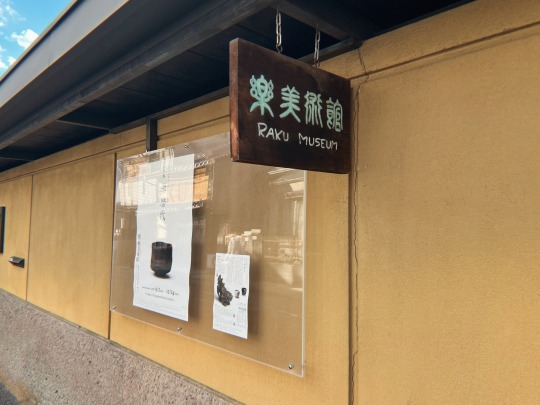

Places accessible only in Japanese
Of course, there is also a lot of places that are not accessible in English. If you speak at least some Japanese, these places are definitely enjoyable as well.
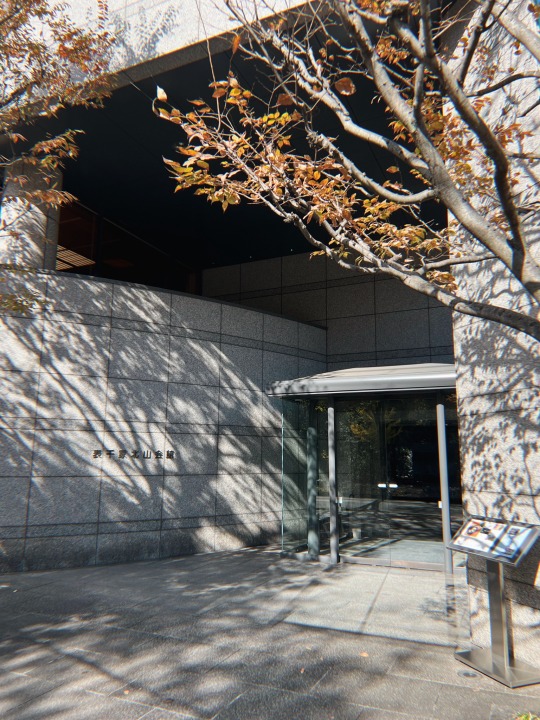
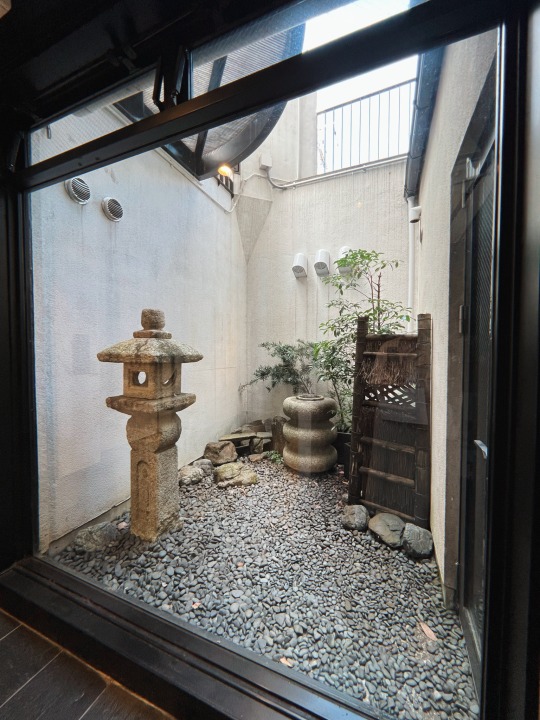
Omotesenke Kitayama Kaikan: This is the official museum of the Omotesenke tea school. Since I'm following the way of the Omotesenke, I HAD to go there. They really don't offer any information in English. So I gave my very best, and tried to read the Japanese captions. I was impressed how much I DID understood, but it's actually not worth mentioning.
Similar to the Chado Research Gallery, they have alternating exhibitions as well as a little theatre where they played educational films. There was also a "library" - which was basically one wall with bookshelves. But it was there, where I discovered an English book about the Omotesenke officially released by the heads of the school. I had no idea. But I will cover that in another blog post. On top of all of that, you can enjoy a Matcha in this museum which was my little highlight.
Overall, if you really don't speak any Japanese, I don't think this museum is enjoyable. One of the other visitors actually asked me, if am learning tea ceremony and Japanese, because she could probably not imagine any other "normal" tourist going there. To be fair, I couldn't as well.
Furuta Oribe Museum: Furuta Oribe was a student of Sen no Rikyu and he had his very own and special taste when it comes to tea utensils. The museum is located directly next to the Omotesenke Kitayama Kaikan. It was the cheapest museum, but also the smallest one. It consists only of two tiny rooms in a basement and a little garden. The first room displays different utensils and the second is a TV room where you can watch a small NHK documentation about Oribe. Compared to the other museum it is still worth its money. But I also have to admit I quite like Oribes weird taste. So I cannot judge, if one would like the museum, if they have no particular interest in Oribe.
Onishi Seiwemon Museum: The Seiwemon family is one of the twelve official craftsmanship families. They are making kettles for the Sansenke families since Rikyus days.
The museum is not open everyday and they seem to post their schedule only in instagram. To enter the museum you have to ring the bell at the front door. After you have entered, you’ll pay the entrance fee and they guide you into a tea room next door. Here you can enjoy a matcha before you are guided to the exhibition room.
They have displayed a special kettle for each of the family heads and you will get an explanation about hem by the current family head himself. At least it was like this in my case. I had no idea about that and felt very honoured. We spoke Japanese the whole time. Even though I didn’t understood every detail, I enjoyed his explanations and he was really welcoming and friendly. Afterwards, I got some time on my own in the exhibition room. There was also a little TV showing some videos of the kettle making process. And I even found a little booklet with English translations.
Besides the kettle exhibition room, they have another room where they display two tea room set ups and a little garden. Overall this museum was a special experience and I am so glad my teacher recommended it to me.

These are all of my recommendations for now. I definitely have to make more trips to Kyoto and learn even more about the origin of my very special interest.
I hope these little insights might help anyone interested in tea ceremony to plan your trip to Kyoto. If you have any other recommendations to add, feel free to do so in the comments.
#japan#tea#japanese culture#tea ceremony#matcha#omotesenke#the way of tea#茶道#茶#抹茶#Kyoto#Kyoto trip#Kyoto Travel#kyoto vacation#京都#京都旅行
3 notes
·
View notes
Text
Happy New Year!!
I hope you had a good start into the year of the dragon 🐉
I’m a bit late. Not only with new years wishes but also with a lot of blog posts I wanted to write! So here’s a little preview of what’s coming in the next time:
First and foremost I’ll write about the tea party in December!
I’m still working on at least one blog post related to my Kyoto trip in November. I’m still processing this trip a lot myself.
Instead of the first lesson in the new year, we usually do hatsugama - the first tea ceremony in the new year.
I’ll also attend another tea ceremony in January. This one is not related to my school and I’m really excited for it.
Let’s have a great 2024! 😌
2 notes
·
View notes
Text
Last Practice before the Tea Party!!!
In generell todays practice went as the last ones. We practiced a lot for our chakai next week.
Everyone seems to be a bit nervous. Even my teachers. They were discussing several details. But everyone is also getting just to the flow - at least as far as I can judge.
Today I learned one really important thing and a minor but helpful thing:
Which hand I use when I move the chawan depends on the surroundings of the chawan. If the natsume stands on the right, I use the left hand. If there is the kensui below on the left side, I use the right hand. And so on. This is to not knock down the other utensils. And as always, it makes soooo much sense!!!
I don’t adjust the amount of hot water when I rinse the chawan. Just one full cup of the hishaku is perfect. I don’t know why I it was different in my mind.
I also talked with my teacher about wearing a kimono. She will help me to put it on in the morning. I’m really thankful to have her as a teacher. Se also gifted me a lot of presents without any reason again. I have jet to look at them when I’m home.
I’m really looking forward to the event! I still have to read and figure out the handwritten notes of my teacher though o.o"
I’ll add a little video later, if I don’t forget about it lol.
4 notes
·
View notes
Text
Handwritten Notes from my Teacher
Actuall I still have a whole Kyoto trip I wanted to blog about here. But this will take a bit longer. So here are my impressions of my last tea school lesson.
We were practicing again in at the residence as last time. One of my two teacher was absent this time, which caused a little bit of a tighter schedule. But I got to be guest three times and also practiced being a hanto as well as the same teame as the last weeks. There were only really minor things my teacher corrected. A lot of it being the order of with which hand I pick up some utensils. Especially at the beginning and end. But one thing stood really out:
When I get the shimeru chawan from the hanto, I take it and before pouring water into it, I habe to say that I close the tea ceremony. Usually this is initiated by the main guest. But since the hanto bring tea from the mizuya this step is skipped.
Everybody got a copy of hand written notes of my teacher about the schedule and details for the event in December. I have jet to read them carefully and hope to understand at lest something.
Besides that, I also talked with some other students about wearing a kimono for the event. They recommended me to definitely talk to my teacher and find someone who will help me in the morning to put on the kimono.
Since the practice what quite busy this time, I didn’t got the chance to ask her. So I’ll probably write her a message.
Sorry no pictures this time.
3 notes
·
View notes
Text
Same Practice as the Last Times and a Special Occasion
Still in preparation for the tea ceremony event in December, we continued to practice kind of the same temae flow as the last several practices. But since we had a special occasion today as well, we were practicing in a different location.
We have been practicing at this location before. It’s a small residence not even a 5 minute walk from the temple where we usually have our okeiko. I am not quite sure who is the owner of this house and how it is related to the temple, but it has at least two tea rooms, several gardens, two really fancy toilets, a study room, a huge kitchen, some kind of dinning room and several other rooms I haven’t even seen. It is build in a very traditional style, but it is definitely build or renovated in quite modern times. It is super interesting and being there always feels like a different world. I added some pictures from the other times we practiced at this location. Only the first picture is from today. And since this is someones residence, I don’t want to reveal too much of the location due to privacy.


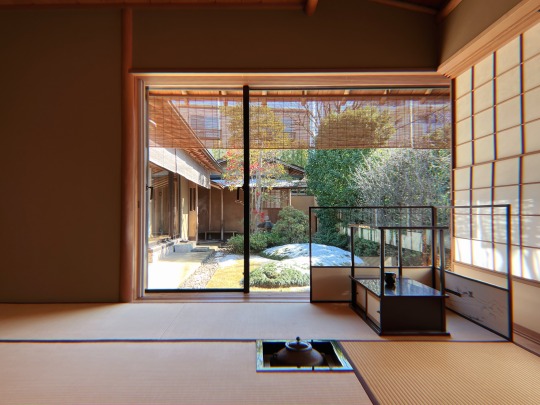


Today we started with almost everyone present joining as guest. In this way we also get to practice being an assistant. Due to that, soon everyone drank already several cups of matcha and no one wanted to be a guest anymore. So I didn’t had the chance to an assistant, because I had to join as guest each time. My caffeine level is really high right now lol.
We practiced in the order of how it will be on the day of the event. Since we were at a different location, the utensils were slightly different. But overall they were equivalents of the utensils we used the last time. Which was a good practice, since the utensils on the day of the event might also be different ones.
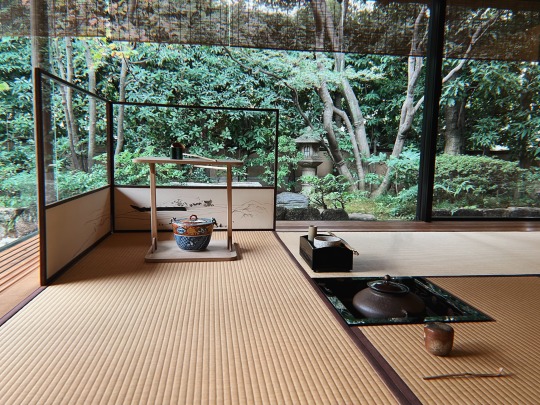
Our teachers also measured the time each round took, since they are afraid of the schedule for the event. But it seems like we are quite in time and could even offer a second bowl. But they were still troubled, if they want to offer a second bowl or not.
Before it was my turn, we made lunch break. Since we had the special occasion today, lunch was provided by the monks (if my Japanese skills didn’t got that wrong). We had sekihan with some vegetable toppings and - of course - mikan. I don’t know why, but somehow there are always mikan when we have food provided from someone.
After lunch the special occasion took place. We did a ceremony with the monks to burn the chasen we used this year. This was really interesting to participate. But the language barrier for some of these special occasions is quite huge. Especially for the chants of the monks. So I didn’t understood everything that was going on. Usually I just go with the flow of the others for these events. Some of the other younger students told me, they just do the same. But I think they are still more familiar with whats going on then I am. Therefore I don’t feel qualified to explain to much about it. Sorry.
After we finished that, it was my time to practice temae. And to take up what I wrote about last practice: I am definitely getting confident! Like yes, everyone complimented me. But I was so nervous that I started practicing every other day at home. And it really helps a lot! Yet practicing in a real tea room wit ALL real utensils is still so much different.
In the course of everything going on today I learned a lot. But these two thing stuck with me:
If you take back two chawan at the same time as assistant, you take the first one, place it in front of your left knee, you take the second one, place it in front of your right knee, you take the first chawan with two hands into your left hand and than take the second one with your right hand. The first chawan in your left hand is hold slightly higher but directly above the second one. Almost like you would want to stack them up onto each other. Oh and don’t forget the bows!
When clearing the chawan at the end, you take it with the right hand. Because it stands pretty far on the left side at the end in case of haiken, the left hand wouldn’t fit in between and it is easier to take the right hand.
I am always so glad for all the experiences I can have because of tea ceremony. It really its own little world and I feel honored to be invited into it.
3 notes
·
View notes
Text
Storytime: I own the same Chawan because I was at a Halloween Event of a Primary School
The other day I accidentally found out I own a chawan that is actually part of a 12 piece set where every chawan represents one month. The one I own is the one for June.
I was actually looking for shelves at the Off House online shop. And somehow ended up looking at this set of chawan. Please don’t ask how. Just when I scrolled through the individuell photos I noticed one of them is the same chawan as I own.
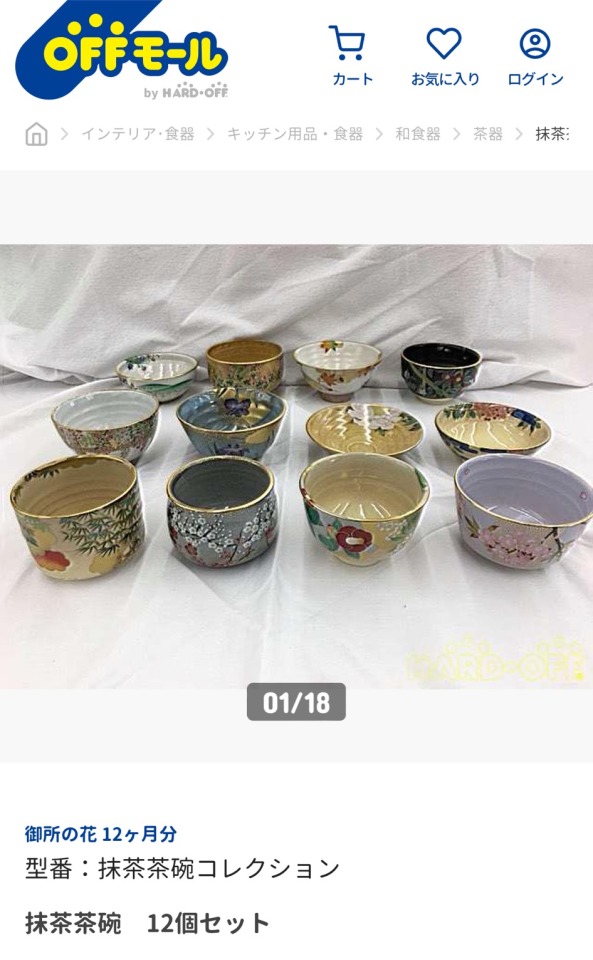

I got this chawan during my study abroad in Japan in 2016. It was gifted to me in a really random way.
I and some others of the exchange students took part in a Halloween party of a elementary school in a nearby village. We were supposed to speak English with the kids, listen to their English presentation about Halloween and play some games with them. Nothing too special.
A few days later, one of the staff members of the international office came to me and said the school gifted them this chawan as a thank you. Since I was interested in tea ceremony she though it would be best that I get this chawan.
At that time I had not started learning tea ceremony. And since I had no budget as an exchange student, this was one of two bowls I owned in general. So I have to admit I used this bowl not exclusively for drinking matcha, but also for eating cereals. Lol. I’m so sorry now. But that’s the reality.
Now I’m wondering what happened to the other chawan of the set my one used to belong to. Mine is currently in Germany, packed in a box with all other utensils I let behind when we moved to Japan last year.
3 notes
·
View notes
Text
Unexpected Tea Time - AGAIN!
MAYBE I forming a habit of making canceled plans an occasion to go to a tea cafe I still have on my list lol.
The other day my husband an I wanted to join a vegan picknick meetup. Unfortunately, it was canceled since it rained in the morning of that day. But I just saw that when we were already at the train station.
So we had a few thought on what to do instead and decided to go to a cafe in an old japanese style house in the middle of Jiyugaoka.

The cafe is called Kosoan and located just a few minutes walk from the station. Their menu is really small and their main thing is MATCHA! You can have it hot, iced and with or without milk. Funny thing is, they don’t call it Matcha Latte (like most would) but rather Matcha Ole (which I find very cute). Besides that they have a small selection of stuff like anmitsu, zenzai and also a matcha float. Everything is a bit pricey in my opinion, but the atmosphere makes it worth it.
The old japanese style house really has it own flair. Before you enter you cross a little garden which really gives of the so often called Ghibli vibes.
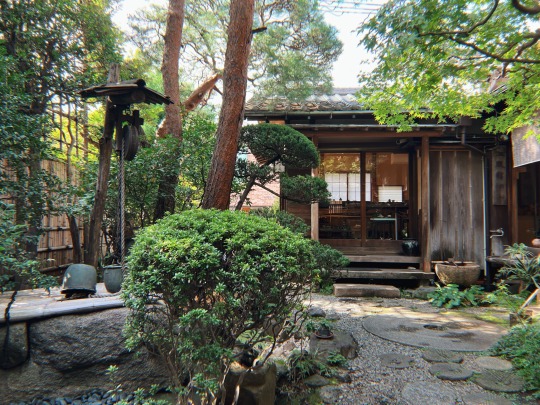
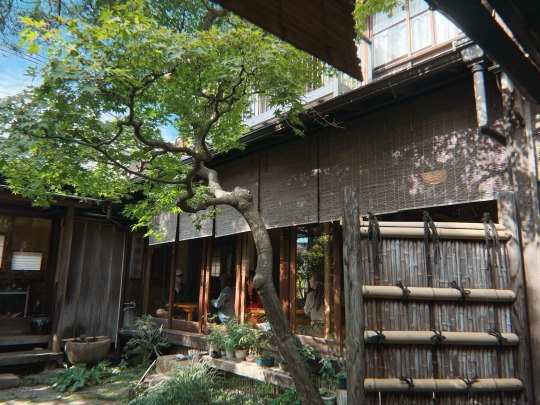
Inside you will sit on tatami matts at old wooden low tables. And everything is decorated with old art stuff like painting, ceramics and puppets. The most intestinal thing to me was kind of a big thick fabric wall scroll which had one little embroidery on it for each month.

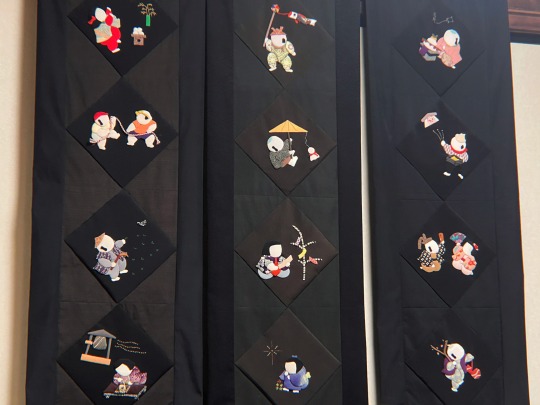
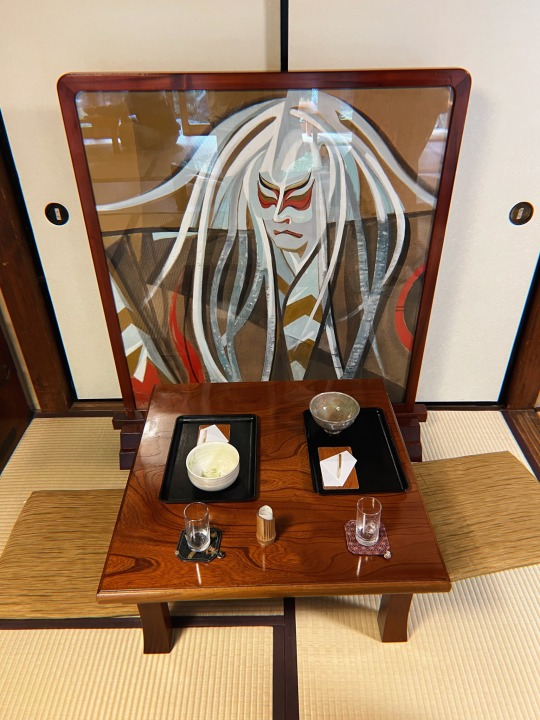
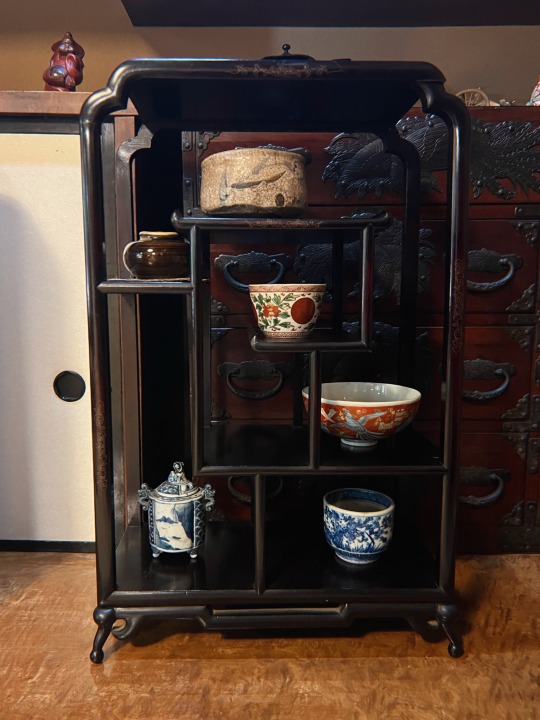
We both ordered a hot matcha which came with a little wagashi made with kuri (japanese chestnut). The matcha was definitely a bigger size than for example compared to the one you get at the tea houses inside the Tokyo Metropolitan Gardens. So maybe it is indeed worth its money.

I’m definitely keeping this habit of visiting matcha cafes when people cancel plans. Always makes room for some good unexpected quality time 🍵✨
6 notes
·
View notes